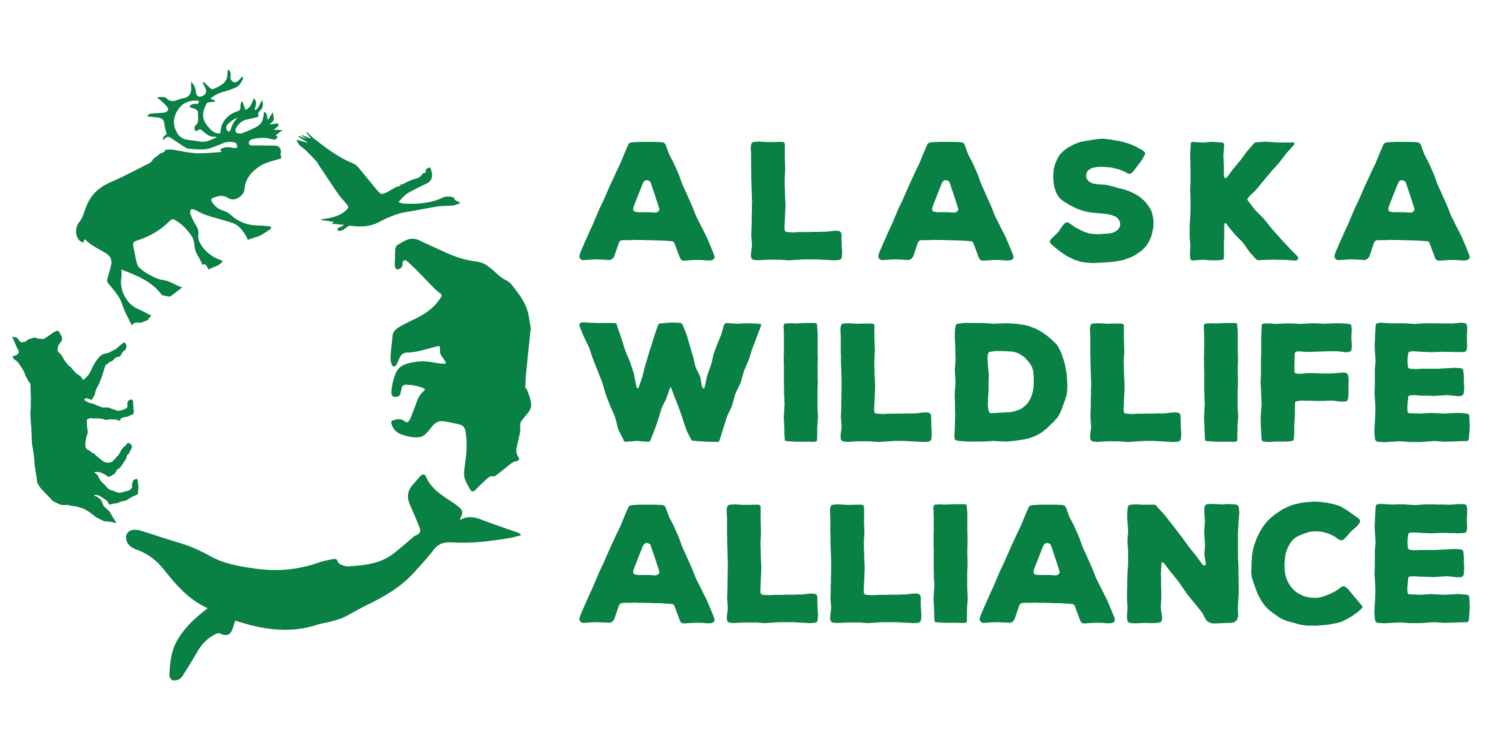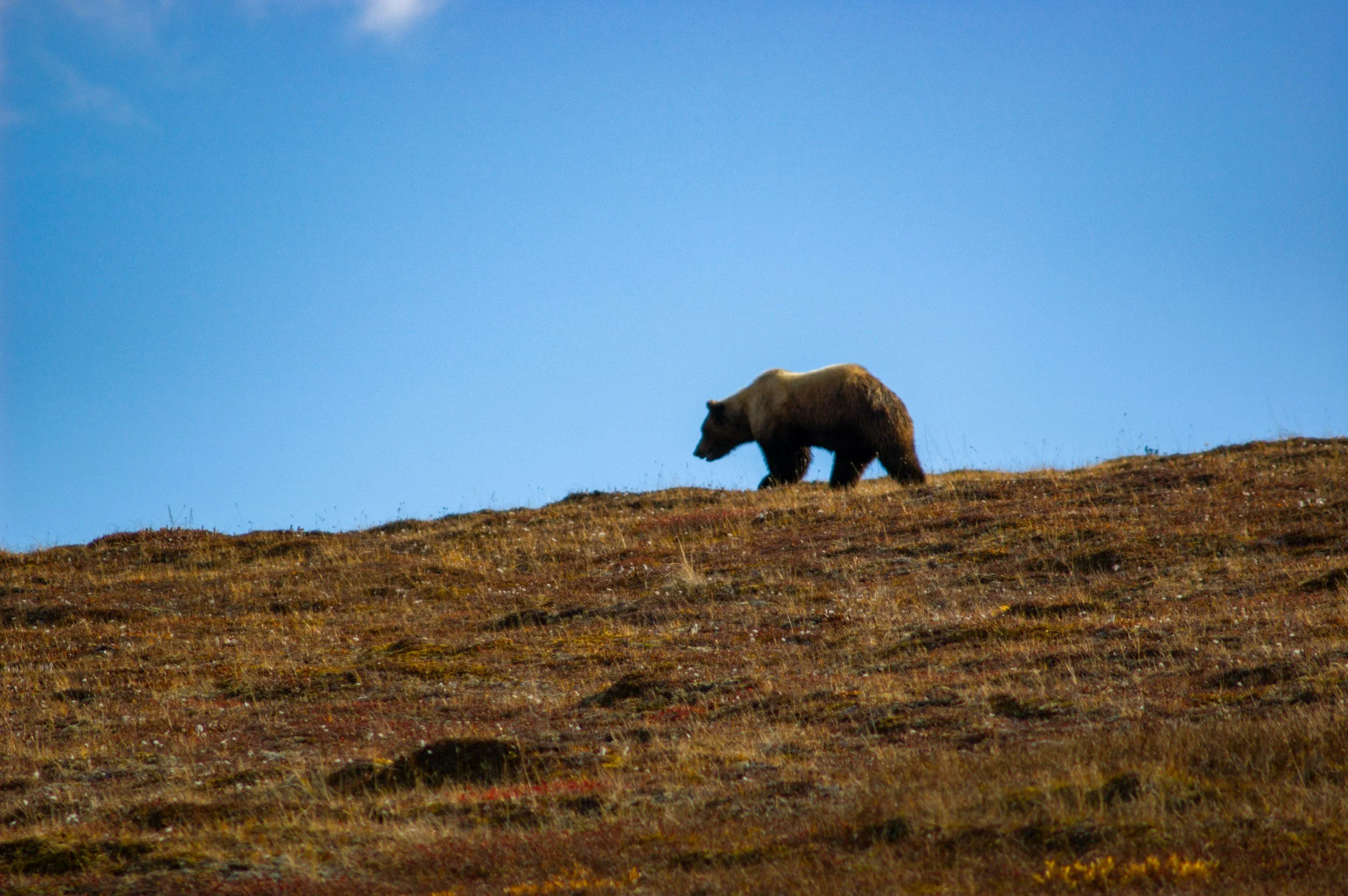The BOG adopted amended Proposal 145, submitted by the Alaska Wildlife Alliance, making it illegal to hunt, trap, and take game within a quarter mile of wildlife crossing structures along the Sterling Highway.
Call to Action: Volunteer for the Benefit of the Belugas at Kenai and Kasilof Beaches
Victory! BLM Selects "No Action Alternative" for Ambler Road
AWA and 'A Good Wolf' at Mountainfilm Festival!
Species Spotlight: Giant Pacific Octopus
This week's Species Spotlight is the Giant Pacific Octopus, or Enteroctopus dofleini!
Photo Courtesy of: Karin Lehnardt / factretriever.org
DID YOU KNOW…
There are 300 species of octopus in the world, and only eight are found in Alaska. The giant Pacific octopus is the largest octopus in the world. In theory, giant Pacific octopuses can lift a cinder block, 7 computer monitors, or a rambunctious four-year-old.
Giant Pacific octopuses have 280 suckers on each arm, giving them a total of 2,240 extraordinarily complex sensory suction cups that taste, smell, and grab. The larger suckers near their mouth and keratin beak can hold a whopping 35 pounds!
A 50-pound octopus can fit through a two-inch hole!
SCIENTIFIC AND COMMON NAMES
Enteroctopus dofleini, Giant Pacific Octopus
GENERAL DESCRIPTION
Full-grown, a giant Pacific octopus can weigh more than 50 pounds, but the heaviest on record weighed 200 pounds and measured nearly 20 feet across. We’re pretty sure that they can win the title of Pacific Ocean Hide-and-Seek Champion hands arms down because they can hide from any predator in one-tenth of a second, by changing and coordinating my skin texture and color to mimic my surroundings. They’re known for their incredible imitation of rocks, reefs, sand, coral, even poisonous fish.
The giant Pacific octopus has nine brains; one big brain and 8 mini, or satellite brains. These mini brains communicate with one another and perform fine tasks without pesky interference from the big brain. That way the one central brain can concentrate on the big life decisions like "what's for lunch?" or "does this kelp make me look fat?" or "yipes, that seal is coming in hot, evasive maneuvers!" They also have copper-based, blue blood, which helps them extract oxygen from the frigid waters they inhabit. Two of their three hearts pump blood to their gills and the third circulates to the rest of their body.
RANGE
The giant Pacific octopus lives in temperate waters in the Pacific Ocean, ranging from Alaska all the way to Baja California. They can be found west to the Aleutian Islands and south to Japan. They’re found at a variety of depths, from shallow water to up to 4,900 feet deep.
THREATS AND CONCERNS
Giant Pacific octopuses are not currently under the protection of Convention on International Trade in Endangered Species of Wild Fauna and Flora, however, the giant Pacific octopus is facing mounting threats due to climate change, pollution, and fishing. Their popularity as a commercial product has increased, with a 2.5 million ton harvest going to the food market and 35,000 pounds caught annually as by-catch. They also have a short life span and are very reclusive, making research difficult.
LIFE HISTORY AND REPRODUCTION
The giant Pacific octopus lives three to five years, and reach sexual maturity at two years of age. While they spend most of their life in solitude, they do eventually seek out a mate and, to make up for it’s short lifespan, they are extremely prolific.
Females lay 120,000 to 4000,000 eggs in long strands, called a ‘mermaid's purse’. The females then care extensively for their eggs and young, protecting them while they themselves starve over the course of six months.
Males don’t have it much better; they pass a spermatophore into the female's mantle during mating and then die a few weeks later.
Photo Courtesy of: Bruce Kerwin / seadocsociety.org
CULTURAL SIGNIFICANCE
Like much of the marine life of Alaska, indigenous connections with octopuses throughout coastal Alaska are deeply rooted in history. They have long been a food source and trade item for subsistence fishers, and are often featured in coastal Alaska Native art, particularly in the homelands of the Tlingit people, who call the octopus “náakw”, or devilfish.
GIANT PACIFIC OCTOPUS COLORING SHEET
We hope you learned something new about the giant Pacific octopus! Check out our Facebook, Instagram, and Twitter to learn more about Alaska’s wildlife, and subscribe to our free newsletter to get updates from the Alaska Wildlife Alliance! If you want to support wildlife conservation in Alaska, you can become a member for $35 dollars a year
Resources:
Photos courtesy of:
Bruce Kerwin
Fred Bavendam
Jim Auzins
Karin Lehnardt
animalspot.org
AWA Presents at the NEHA Summit
In June, AWA and our partners at the Native Village of Paimiut spoke at the National Environmental Health Association Summit in Anchorage. The summit, Climate and Health: Alaska Native Engagement Summit sought to “identify ways to address the urgent and disproportionate impacts of climate change on Alaska Native communities.”
AWA Speaks at the Climate Change Preparedness Conference in Las Vegas
AWA Executive Director, Nicole Schmitt, and Board Member Angute'karaq Qakvalria, Estelle Thomson spoke at the Climate Change Preparedness Conference in Las Vegas last month.
The three-day event included climate experts, government officials and policymakers, community organizers, youth leaders, environmental professionals, and other stakeholders from around the country.
Action Alert: Lake Clark Coastal Management Plan Comment Period
AWA Director Receives Wildlife Conservation Award
Last week, AWA's Executive Director was honored to receive the Alaska Chapter of the Wildlife Society's 2024 Wildlife Conservation Award! This award recognizes "outstanding professional achievement during the preceding five years."
Nicole enjoys overseeing all AWA's programs, from being a voice for wildlife at state and federal regulatory meetings, to developing climate resiliency for wildlife, and engaging with folks all around Alaska in support of species and habitats. We are honored to share this award in recognition off all the hard work by AWA's staff and board, and the members who makes this possible. Thank you!





























